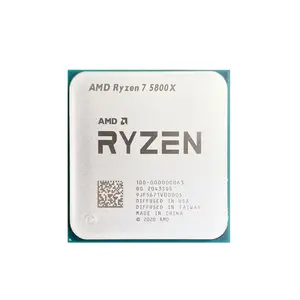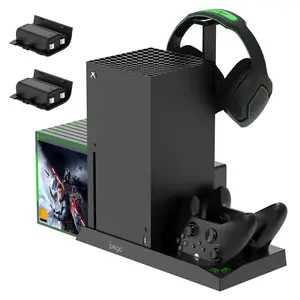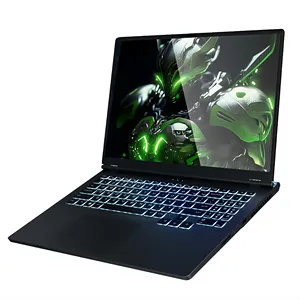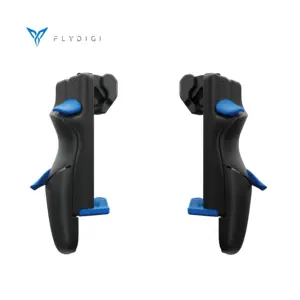Phổ biến trong ngành của bạn

P7.8 tường trong nhà phim dính ngoài trời và linh hoạt mềm cong Rèm cao trong suốt Màn hình hiển thị LED
220,00 US$ - 880,00 US$
Đơn hàng tối thiểu: 10 Cái


Màu Xanh Ngăn Chặn Ánh Sáng Chống Peek Tàng Hình HD Điện Thoại Di Động Tempered Glass Bảo Vệ Màn Hình Phim Với Dễ Dàng Cài Đặt Kit
Sẵn sàng vận chuyển
1,20 US$ - 2,00 US$
Đơn hàng tối thiểu: 1 Bộ
Vận chuyển mỗi chiếc: 12,46 US$


IPhone HD sự riêng tư chống gián điệp Tempered Glass bảo vệ màn hình phim với 2.5D 3D 5D 6D 9D 11D 18D 21d siêu D nhập khẩu từ Trung Quốc
Sẵn sàng vận chuyển
1,20 US$ - 2,80 US$
Đơn hàng tối thiểu: 1 Bộ
Vận chuyển mỗi chiếc: 12,42 US$


2024 Matte như giấy bảo vệ màn hình chống phản chiếu chống vân tay bằng văn bản phim sơn phim cho iPad Mini 6 Pro 13 11 không khí
Sẵn sàng vận chuyển
0,61 US$ - 0,89 US$
Đơn hàng tối thiểu: 50 Cái
Vận chuyển mỗi chiếc: 0,65 US$


Kunxin 1220x2440 quang nhựa cuộn 0.2 mét 0.3 mét PC hoặc Pet LED phản chiếu phim cho LED bảng điều chỉnh
2,50 US$ - 2,90 US$
Đơn hàng tối thiểu: 100 Kilogram
Vận chuyển mỗi chiếc: 37,92 US$


32 42 46 48 50 52 55 58 60 Inch Chống Ánh Sáng Xanh LCD LED Plasma HDTV Màn Hình TV Protector Anti-Glare Bảo Vệ Mắt Phim
13,55 US$ - 18,85 US$
Đơn hàng tối thiểu: 10 Cái

Rõ ràng Acrylic chống ánh sáng màu xanh Lọc inch 55lcd LED 85 inch TV protectortm phim 48 49 65 inch TV bảo vệ màn hình
7,20 US$ - 15,00 US$
Đơn hàng tối thiểu: 20 Cái

16:9 40 Inch 884*497Mm Bộ Lọc Riêng Tư Chống Chói Bảo Vệ Màn Hình Phim Bảo Vệ Cho Màn Hình Rộng TV LCD/Màn Hình LED
Sẵn sàng vận chuyển
78,00 US$
Đơn hàng tối thiểu: 1 Cái
Vận chuyển mỗi chiếc: 74,66 US$

Bộ Lọc Bảo Vệ Màn Hình Chống Lóa 40 Inch Bộ Bảo Vệ Màn Hình Cho TV Màn Hình Rộng LCD/Màn Hình LED Tỷ Lệ Khung Hình 16:9
100,00 US$ - 329,00 US$
Đơn hàng tối thiểu: 1 Cái

32 40 43 50 55 65 70 inch HD rõ ràng Acrylic gắn kết dẫn thông minh TV bảo vệ màn hình phẳng chống ánh sáng màu xanh bảo vệ phim
26,00 US$ - 74,00 US$
Đơn hàng tối thiểu: 100 Cái

LFD347 Bán Hot Bảo Vệ Mắt Chống Ánh Sáng Màu Xanh Tablet Screen Protector Phim Cho iPad Lordinateur Máy Tính Bảng Bảo Vệ Màn Hình
Sẵn sàng vận chuyển
1,00 US$ - 13,00 US$
Đơn hàng tối thiểu: 1 Cái
Vận chuyển mỗi chiếc: 17,13 US$

Tấm Dán Màn Hình Máy Tính Apple iMac, Tấm Phim PET Lọc Ánh Sáng Xanh Mờ Chống Chói, Chống Ánh Sáng Xanh, Tia UV, Dùng Cho Máy Tính Để Bàn TV
3,00 US$ - 4,50 US$
Đơn hàng tối thiểu: 100 Cái
Các tìm kiếm liên quan:
phim bảo vệ màn hình tvtruyền hình quốc gia filmephim truyền hình chuyên nghiệpphim bảo vệ tv lcdphim truyền hình trực tuyếnphim truyền hình videotv và phimmàn hình cảm ứng phim tvfilmes truyền hình thông minh trực tuyếntv phim bảo vệphim phòng đỏtv filme19 phim sex tvphim truyền hình chống chóivỗ tay phim truyền hình

Màn Hình Riêng Tư Máy Tính Tấm Bảo Vệ Màn Hình Máy Tính Xách Tay Tấm Lọc Riêng Tư Màn Hình Chống Lóa Chống Lóa Chống Ánh Sáng Xanh
2,60 US$ - 2,80 US$
Đơn hàng tối thiểu: 10 Cái
Vận chuyển mỗi chiếc: 18,10 US$

Miếng Dán Bảo Vệ Màn Hình Chống Sốc Siêu Mịn Chống Trầy Xước Trong Suốt TPU HD Cho Điện Thoại Di Động
18,00 US$
Đơn hàng tối thiểu: 600 Mét vuông

Anti-glare Magnetic sự riêng tư bảo vệ màn hình Bộ lọc máy tính xách tay màn hình phim cho máy tính xách tay 15.6 inch 16:9 bảo vệ màn hình
0,99 US$ - 5,99 US$
Đơn hàng tối thiểu: 20 Cái

Chống Ánh Sáng Xanh Chất Lượng Cao Bảo Vệ Màn Hình Tv Bảo Vệ Màn Hình Máy Tính Xách Tay
26,99 US$ - 29,99 US$
Đơn hàng tối thiểu: 50 Cái

12 40 inch Acrylic LED màn hình TV mica bảo vệ acrylic 55 i cho Sony TV 75 inch bảo vệ màn hình
4,00 US$ - 7,00 US$
Đơn hàng tối thiểu: 20 Cái

Kính Acrylic 58 In Pdlc 77 Chống Lóa Plasma Led 65 Inch Bảo Vệ Mắt Khỏi Tia Uv 50 85 Miếng Bảo Vệ Màn Hình Tv Phẳng Cho Samsung
50,13 US$ - 76,29 US$
Đơn hàng tối thiểu: 50 Cái

Khung Nhìn Rõ Chống Tia Cực Tím Độ Cứng 3H Chất Liệu Acrylic Loại Treo Dễ Lắp Đặt Bảo Vệ Màn Hình Cho TV LED Thông Minh 65 Inch
95,00 US$ - 115,00 US$
Đơn hàng tối thiểu: 10 Cái

Tốt nhất Đầy đủ keo chống ánh sáng màu xanh Hydrogel 65 inch cho Samsung phim TV bảo vệ màn hình
12,30 US$ - 35,80 US$
Đơn hàng tối thiểu: 50 Cái
Vận chuyển mỗi chiếc: 4,37 US$

Tấm Bảo Vệ Màn Hình TV Led Chống Ánh Sáng Xanh 60 65 Inch Tấm Bảo Vệ Mắt Acrylic Trong Suốt Chống Lóa Tấm Bảo Vệ Màn Hình TV Cho TV Máy Vi Tính
3,00 US$ - 25,00 US$
Đơn hàng tối thiểu: 200 Cái

Bán Buôn Nhà Máy Giá An Toàn Glass Bảo Vệ Màn Hình Cho Led Tv
1,20 US$ - 3,90 US$
Đơn hàng tối thiểu: 100 Cái

LED TV phân cực phim OLED Monitor sẽ phân cực Glass 65inch LCD kích thước 32,43,50,55,65 32 43 50 55 65 notizbuch Cổ Phiếu cho Asus
Sẵn sàng vận chuyển
4,99 US$ - 19,99 US$
Đơn hàng tối thiểu: 1 Cái
Vận chuyển mỗi chiếc: 0,00 US$

Bán Buôn 9H 2.5d 3d Điện Thoại Màu Xanh Sexy Phim Riêng Tư Tempered Glass Full Cong Bìa Bảo Vệ Màn Hình Cho Iphone 14 12 13 Pro Max
0,35 US$ - 1,20 US$
Đơn hàng tối thiểu: 100 Cái

Dụng Cụ Sản Xuất Bán Sỉ 4 Gói Dễ Lắp Đặt Dụng Cụ Bảo Vệ Màn Hình Bằng Nhôm Cao 9H Bảo Vệ Cho Google Pixel 2 7 Pro
Sẵn sàng vận chuyển
2,38 US$ - 3,19 US$
Đơn hàng tối thiểu: 50 Cái
Vận chuyển mỗi chiếc: 2,12 US$

Giá cả cạnh tranh ánh sáng màu xanh cắt bảo vệ màn hình, máy tính để bàn 24inch máy tính Acrylic treo trên Chống ánh sáng màu xanh bảo vệ màn hình
Sẵn sàng vận chuyển
6,60 US$ - 19,90 US$
Đơn hàng tối thiểu: 10 Cái
Vận chuyển mỗi chiếc: 10,84 US$

3 Gói Bảo Vệ Màn Hình iPhone 11 Pro Max Bảo Vệ Màn Hình Gốm Mềm Phim Bảo Vệ Màn Hình Cho 15 14 13 Pro Promax Cộng Với
0,25 US$ - 1,39 US$
Đơn hàng tối thiểu: 20 Cái
Vận chuyển mỗi chiếc: 2,40 US$

Giá nhà máy bán buôn kính an toàn bảo vệ màn hình cho LED TV
1,20 US$ - 3,90 US$
Đơn hàng tối thiểu: 100 Cái
Vận chuyển mỗi chiếc: 8,06 US$

Giá Bán Buôn Rõ Ràng Acrylic Chống Ánh Sáng Màu Xanh Lọc 65 Inch Tv Protectortm Phim 32 ''-55'' Inch Tv Screen Protector
6,80 US$ - 25,80 US$
Đơn hàng tối thiểu: 10 Cái

52 "Inch Chống Lóa Privacy Filter Widescreen TV Screen Protector Guard Phim cho LCD/LED Monitor 16:9 Aspect Ratio
199,00 US$ - 499,00 US$
Đơn hàng tối thiểu: 1 Cái

Tấm Bảo Vệ Màn Hình TV 32-65 Inch Bộ Lọc Ánh Sáng Xanh Màng Chống Lóa Chống Trầy Xước Giảm Mỏi Mắt Cho Màn Hình LCD LED 65 Inch
13,55 US$ - 18,55 US$
Đơn hàng tối thiểu: 10 Cái

Bán Buôn Có Thể Tháo Rời Matte Chống Lóa HD Bảo Vệ Màn Hình Riêng Tư Chống Gián Điệp Bộ Lọc Ánh Sáng Xanh Cho Máy Tính Để Bàn Pc Led TV
15,00 US$ - 18,00 US$
Đơn hàng tối thiểu: 10 Cái

Màng Bảo Vệ Màn Hình TPU Chống Sốc Màng Bảo Vệ Màn Hình Điện Thoại Di Động Cuộn Chính Hãng Chất Liệu Màng Bảo Vệ Chống Sốc Thô
22,00 US$
Đơn hàng tối thiểu: 600 Mét vuông

Bán buôn chống nhìn trộm bảo vệ màn hình chống chói chống phản chiếu màn hình riêng tư phim cho MacBook Pro
3,50 US$ - 3,70 US$
Đơn hàng tối thiểu: 10 Cái
Vận chuyển mỗi chiếc: 18,08 US$

Bộ Lọc Riêng Tư Có Thể Tháo Rời LFD171 Miếng Bảo Vệ Màn Hình Máy Tính Bảng Cho iPad Air 4 10.9 Miếng Dán Màn Hình Bán Sỉ
1,00 US$ - 13,00 US$
Đơn hàng tối thiểu: 1 Cái

Chống Spy máy tính xách tay lọc sự riêng tư hấp thụ từ PET máy tính xách tay bảo vệ màn hình phim cho máy tính
0,99 US$ - 5,99 US$
Đơn hàng tối thiểu: 20 Cái

Bảo Vệ Màn Hình Máy Tính Để Bảo Vệ Mắt Tấm Acrylic Tấm Bảo Vệ Màn Hình TV LED Cho Bộ Lọc Riêng Tư 24"
5,00 US$ - 48,00 US$
Đơn hàng tối thiểu: 10 Cái

Chống ánh sáng màu xanh bảo vệ mắt exprosion-proof Acrylic Pet cứng di chuyển treo một 32-75 inch PC TV bảo vệ màn hình để bán
26,00 US$ - 74,00 US$
Đơn hàng tối thiểu: 100 Cái

Chống Bức Xạ Chống Ánh Sáng Xanh Máy Tính Tv Protector Bảo Vệ Màn Hình Cho Led Tv
3,99 US$ - 39,99 US$
Đơn hàng tối thiểu: 100 Cái

Khung Nhìn Rõ Chống Tia Cực Tím Độ Cứng 3H Chất Liệu Acrylic Loại Treo Dễ Lắp Đặt Bảo Vệ Màn Hình Cho TV LED Thông Minh 40Inch-75Inch
47,00 US$ - 127,00 US$
Đơn hàng tối thiểu: 10 Cái
Các danh mục hàng đầu
Giới thiệu về led tv màn hình bảo vệ phim
Alibaba.com cung cấp các sản phẩm 103 led tv màn hình bảo vệ phim. Có rất nhiều led tv màn hình bảo vệ phim lựa chọn dành cho bạn, chẳng hạn như anti-scratch, chống-vân tay, và cao trong suốt. Bạn cũng có thể chọn từ thủy tinh, asahi kính, và nhật bản asahi kính led tv màn hình bảo vệ phim. Cũng như từ trong suốt, hd rõ ràng, và khác led tv màn hình bảo vệ phim.Và bất kể led tv màn hình bảo vệ phim là điện thoại di động, máy ảnh, hay camera lense của mobilephone.






















